[Monardellas: The Genus Monardella West of
the Cascade Mts. of Oregon and Washington]
Coyote Mint, Monardella, Mountain Monardella, Western Mountain Balm
Monardella odoratissima
Synonyms: Monardella discolor, Monardella glauca, Monardella odoratissima ssp. discolor, Monardella odoratissima ssp. euodoratissima, Monardella odoratissima ssp. glauca, Monardella odoratissima ssp. odoratissima, Monardella odoratissima ssp. pallida, Monardella odoratissima ssp. pinetorum, Monardella odoratissima var. discolor, Monardella odoratissima var. glauca, Monardella odoratissima var. neglecta, Monardella odoratissima var. odoratissima, Monardella odoratissima var. ovata
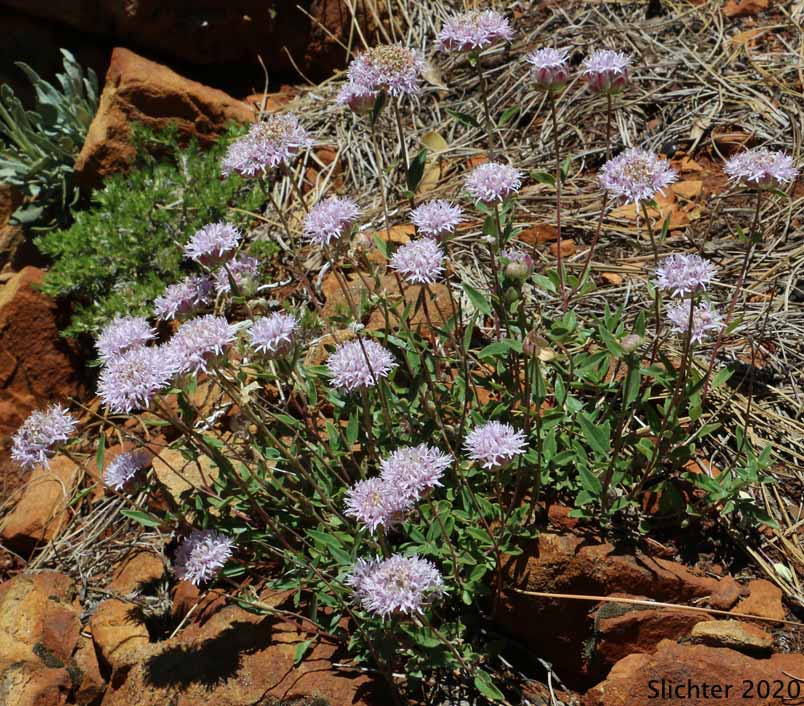 -
- 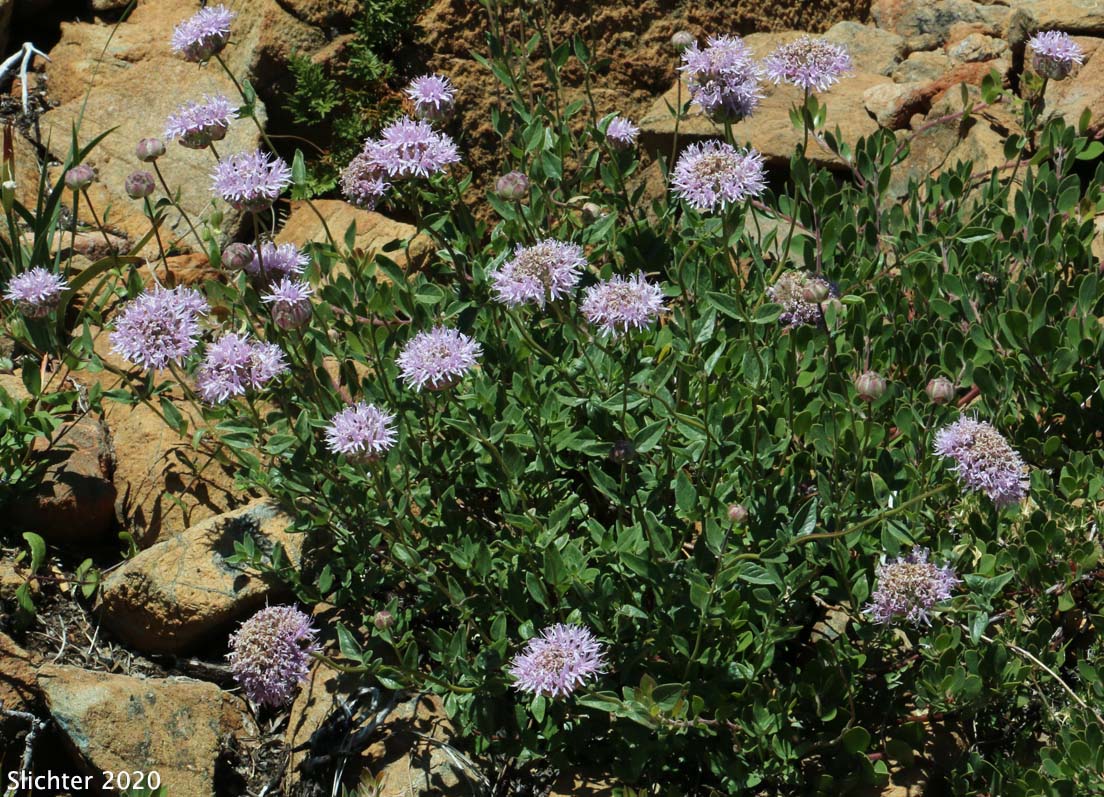
Western mountain balm as seen along the Pacific Crest Trail #2000 on the south side of Cook and Green Peak, Klamath National Forest........July 14, 2020. In California, this would currently be ssp. glauca.
Characteristics:
Mountain monardella or coyote mint is an attractive, scented
perennial with numerous stems arising from 10-50 cm in height. The older stems
become somewhat woody below. The leaves have very short petioles and they are
arranged opposite on the stem. They are lance-like to elliptical in shape, 1-3.5
cm long and 3-12 mm wide, and have entire margins. The herbage varies from nearly
glabrous to covered with numerous gray hair
The inflorescence is a tight head of numerous slender,
pale red-purple to dirty white flowers. The inflorescence is flat-topped and
ranges from 1-4 cm wide. Distinct bracts from 7-15 mm long make up an involucre
below the head. The individual corollas measure from 1-2 cm long with subequal
lips, 3 narrow lobes making up the lower lip and two lobes the upper lip.
Coyote mint is a very nice wildflower for the rock
garden, or dry east Cascades garden. Plants are smaller and short-lived west
of the Cascades where they are susceptible to mildew. Keep other plants somewhat
distant from them to ensure better air circulation.
Subspecies of Mountain Monardella:
ssp. discolor -
ssp. odoratissima -
Habitat:
Coyote mint is found in open, rocky places from
the plains to medium elevations in the mountains.
Range:
Coyote mint is found east of the Cascade summit
in Washington and Oregon. It may be found eastward to northern Idaho and Colorado
and New Mexico, and south to southern California.
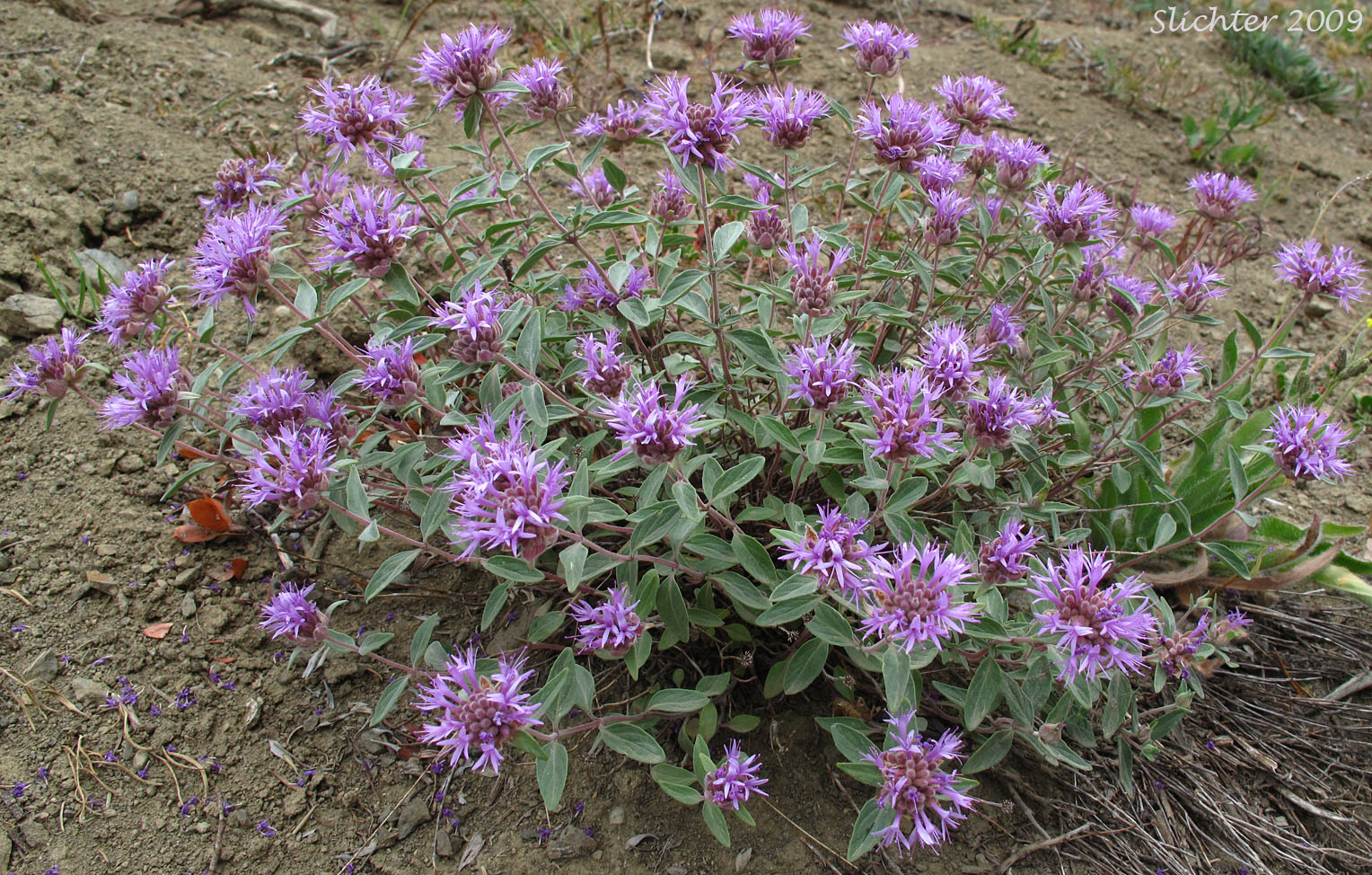
Mountain monardella as seen about 5 miles west of Mission Peak, Wenatchee National Forest........July 24, 2009.
- 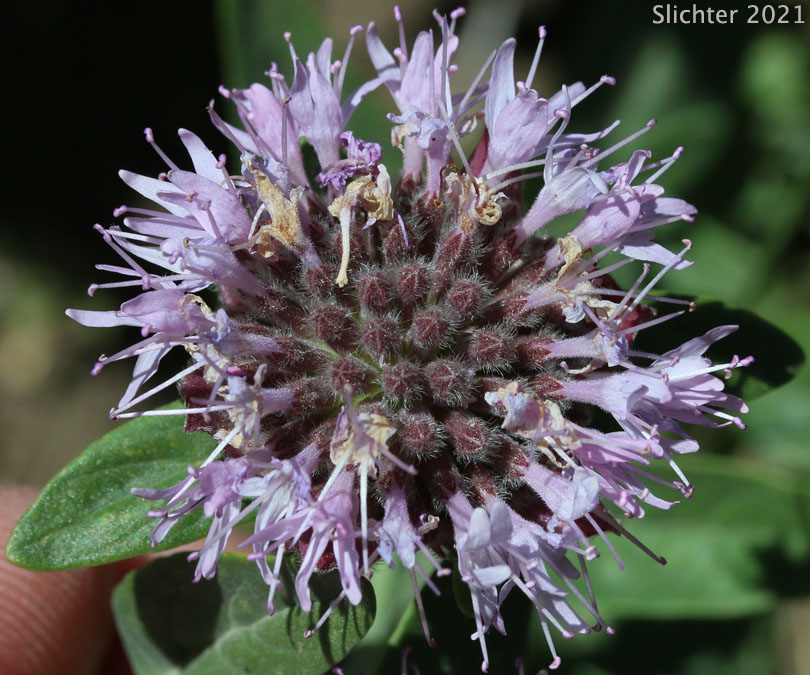 -
- 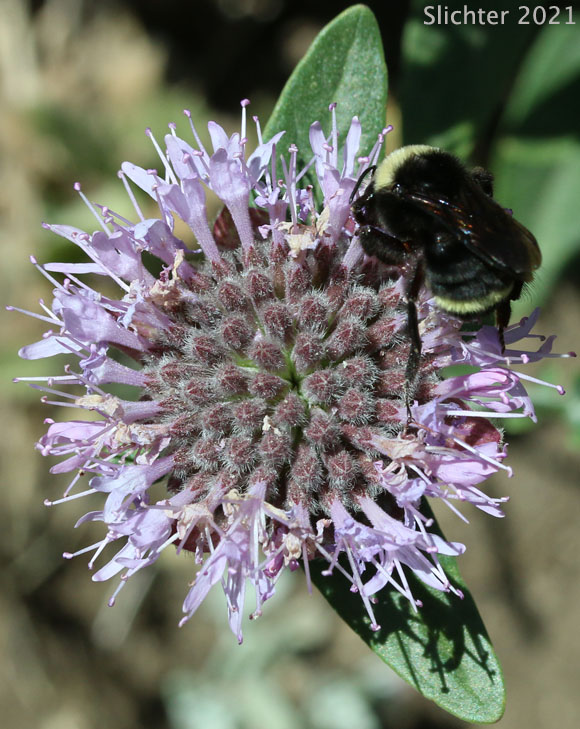
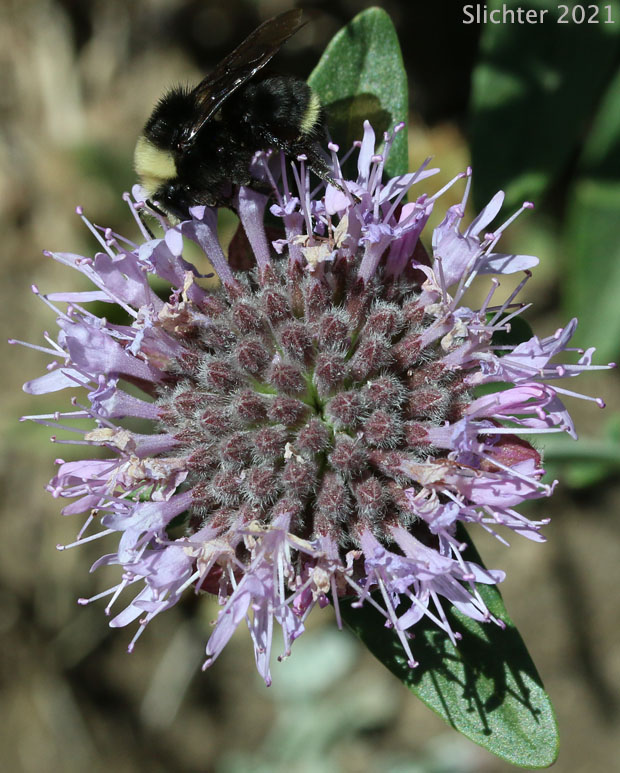 -
- 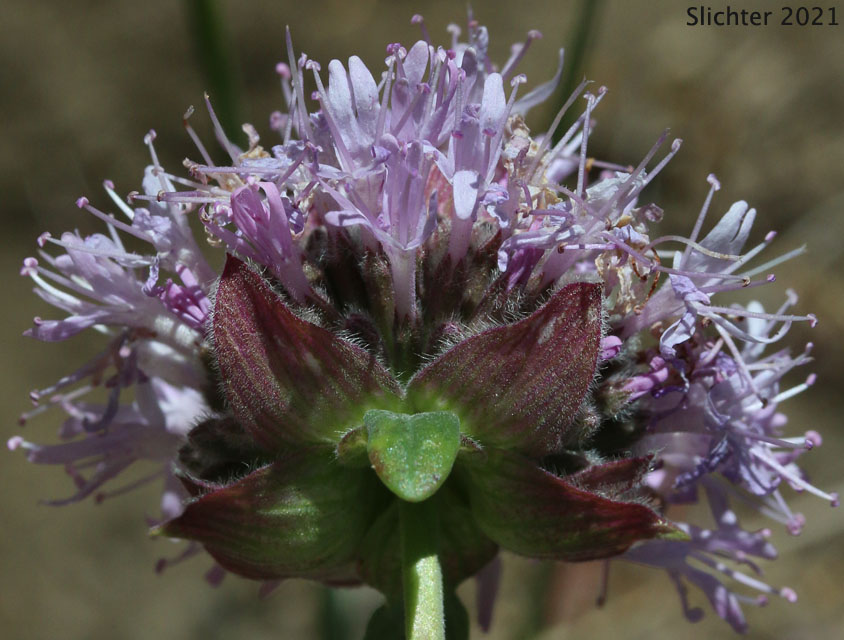
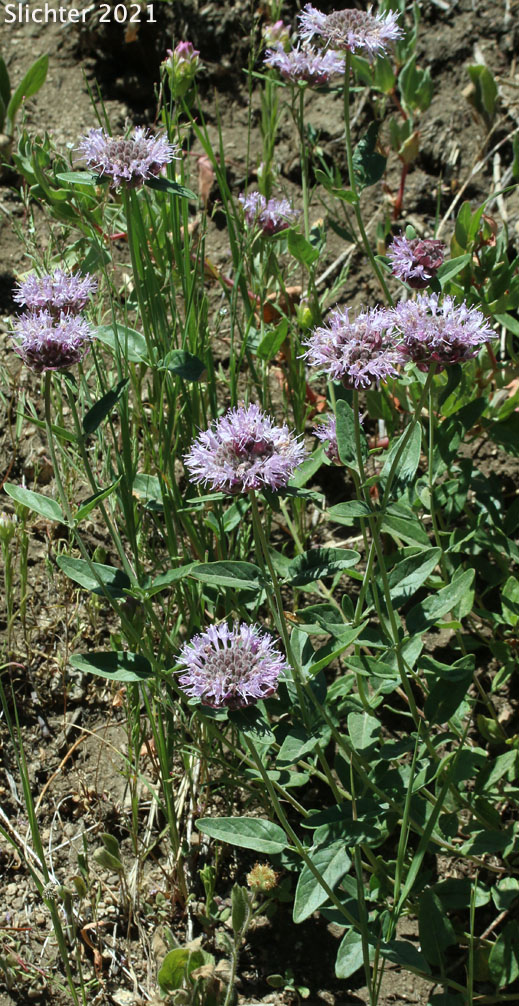 -
- 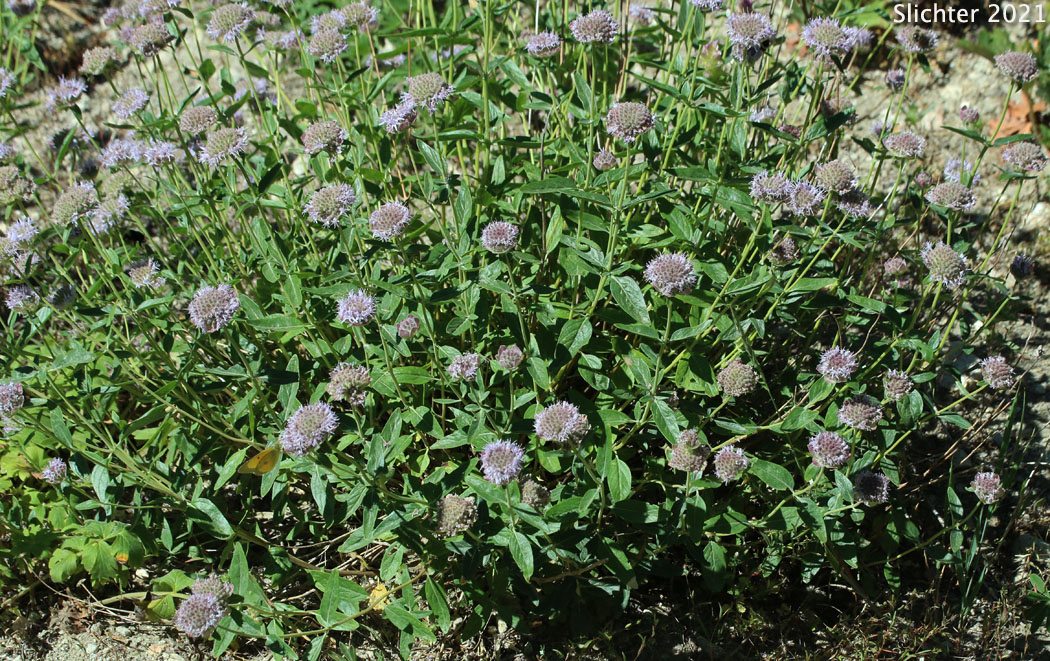
Coyote mint observed along the Pacific Crest Trail #2000 between Mt. Ashland and Grouse Gap, Klamath National Forest, Jackson County, OR.....July 22, 2021.
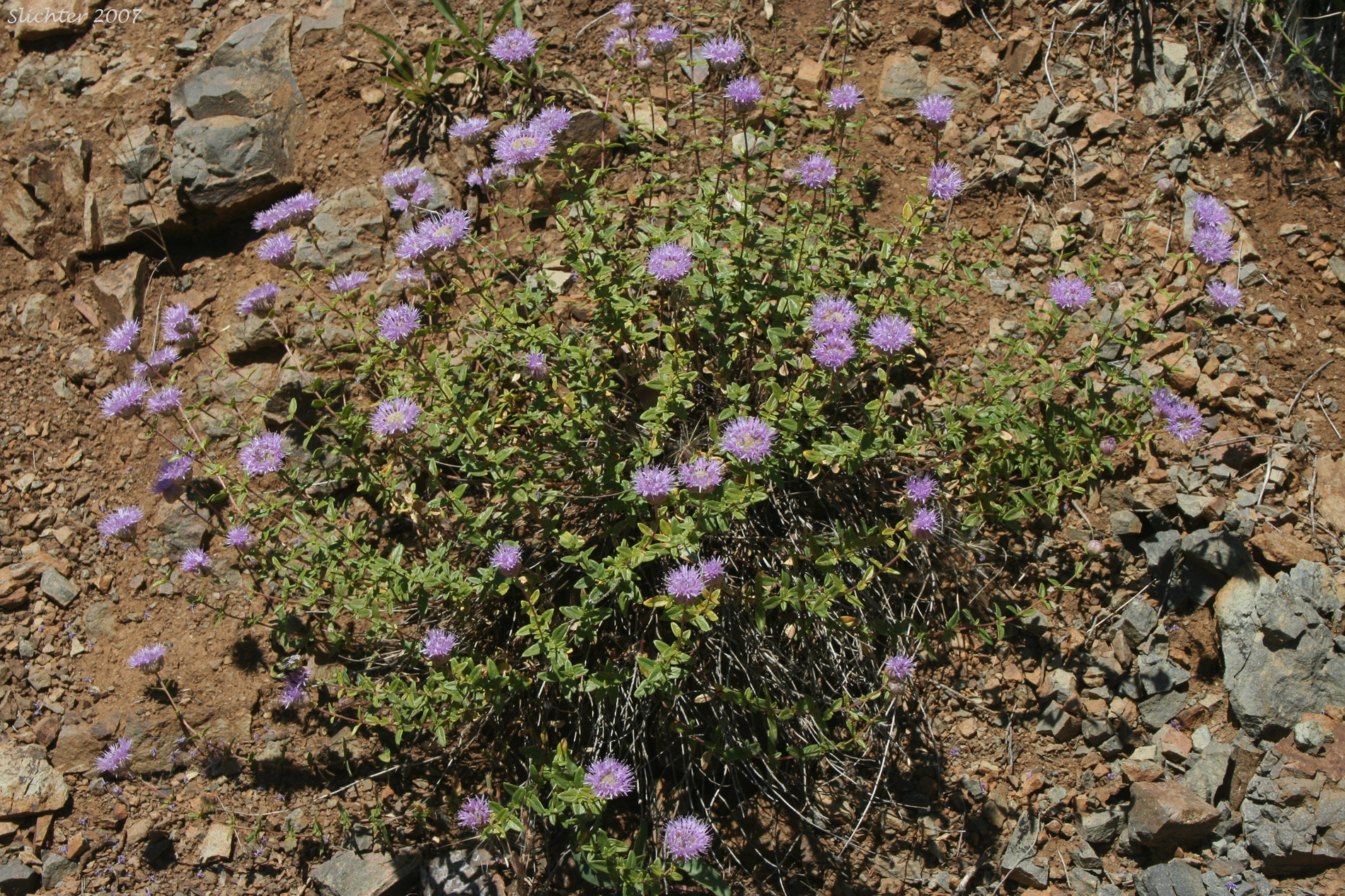
The photo above shows coyote mint as seen along the Eureka Road about 2 miles north of Buckhorn Lookout in the Wallowa-Whitman National Forest in northeastern Oregon.......July 9, 2007.
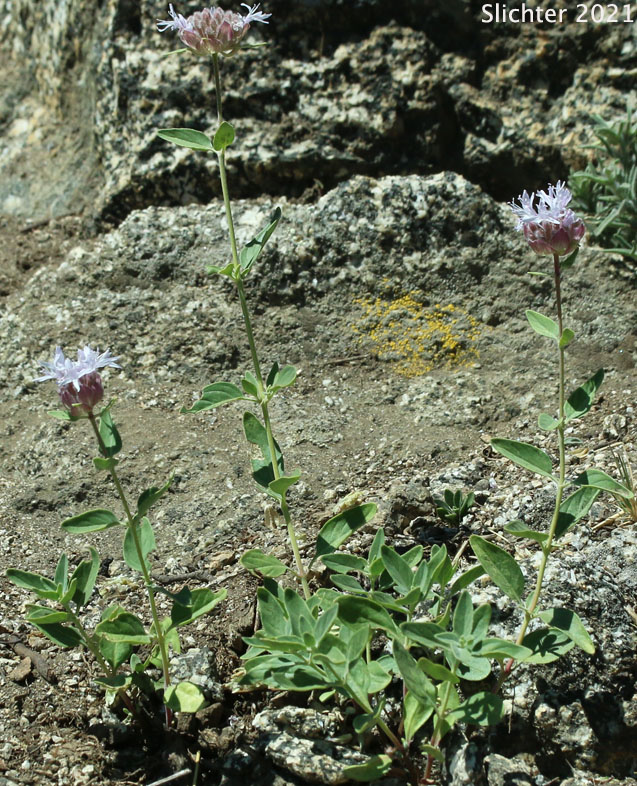 -
- 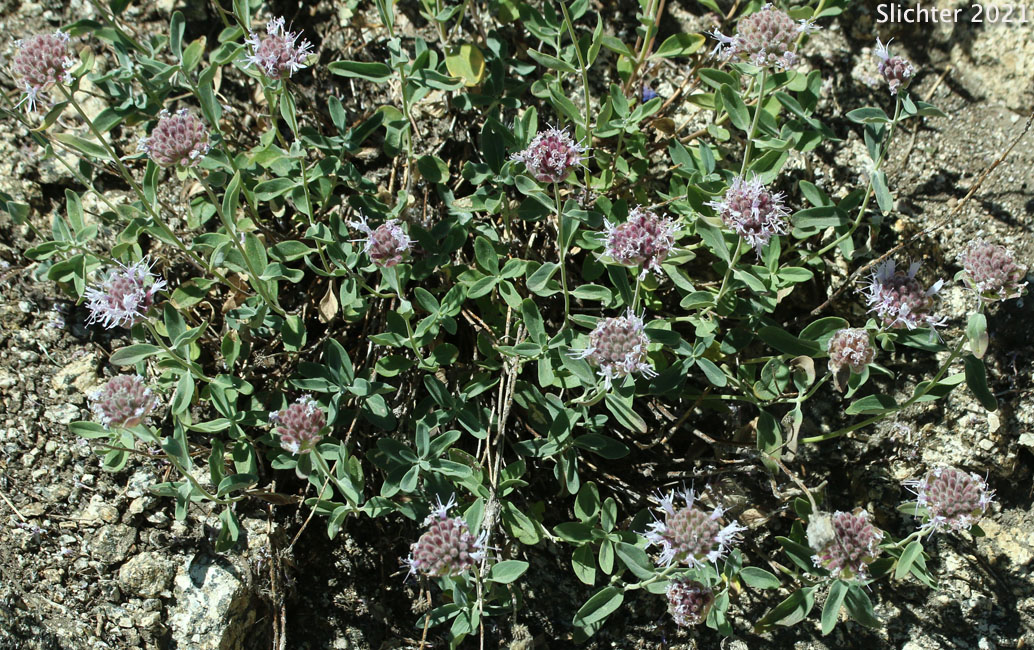
Coyote mint observed along the Pacific Crest Trail between Grouse Gap and Siskiyou Peak, Klamath National Forest, Jackson County, OR.....July 23, 2021.

An unidentified skipper nectaring on the flowers of coyote mint as seen on steep serpentine gravel slopes along the Canyon Mountain Trail #218, Strawberry Mountain Wilderness.........August 19, 2011.
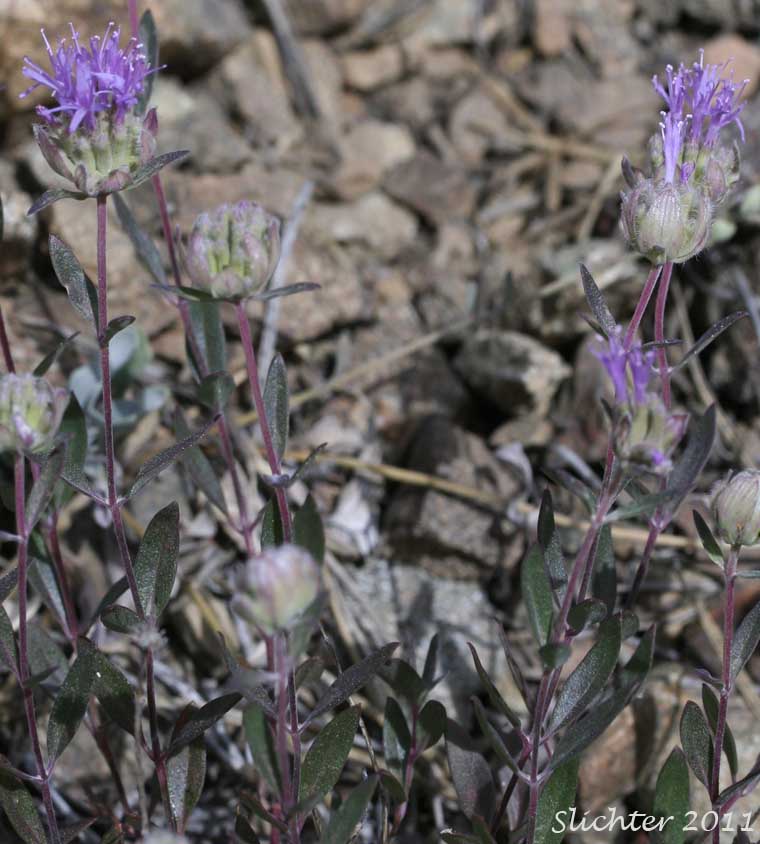 -
- 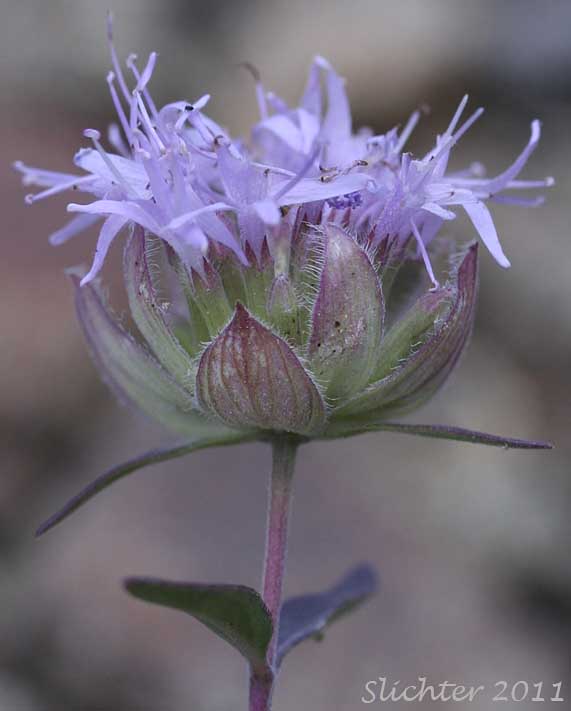
Coyote mint as seen on steep serpentine gravel slopes along the Canyon Mountain Trail #218, Strawberry Mountain Wilderness........August 1, 2011.
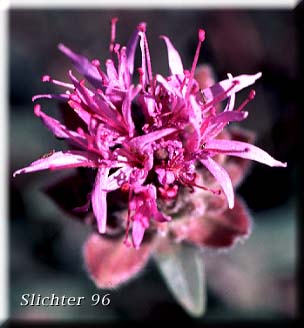
The photo above shows mountain monardella from the northwest face of Table Mt., Wenatchee N.F........July 25, 1996.
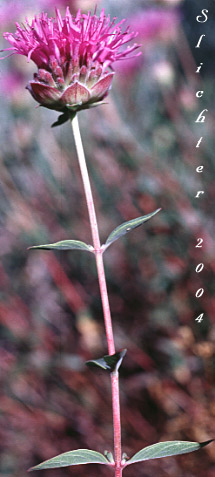 -
- 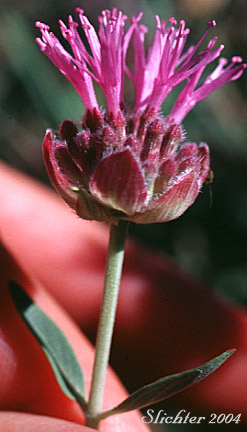
These photos give a sense of what the
stem, opposite leaves and terminal inflorescence of coyote mint look like. Note also the long, narrow lobes of the corollas and the broad, leaf-like
bracts immediately below. Photographed
on steep open slopes on the lower half of the Fields Peak trail, Malheur NF........July
15, 2003.
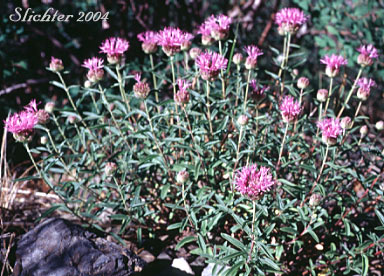
Coyote mint forms fairly tight clusters of numerous upright stems.
The glaucous foliage and clusters of lavender to purplish flowers are very attractive.
Photographed on steep open slopes on the lower half of the Fields Peak trail,
Malheur NF.........July 15, 2003.
Paul Slichter
 -
- 
